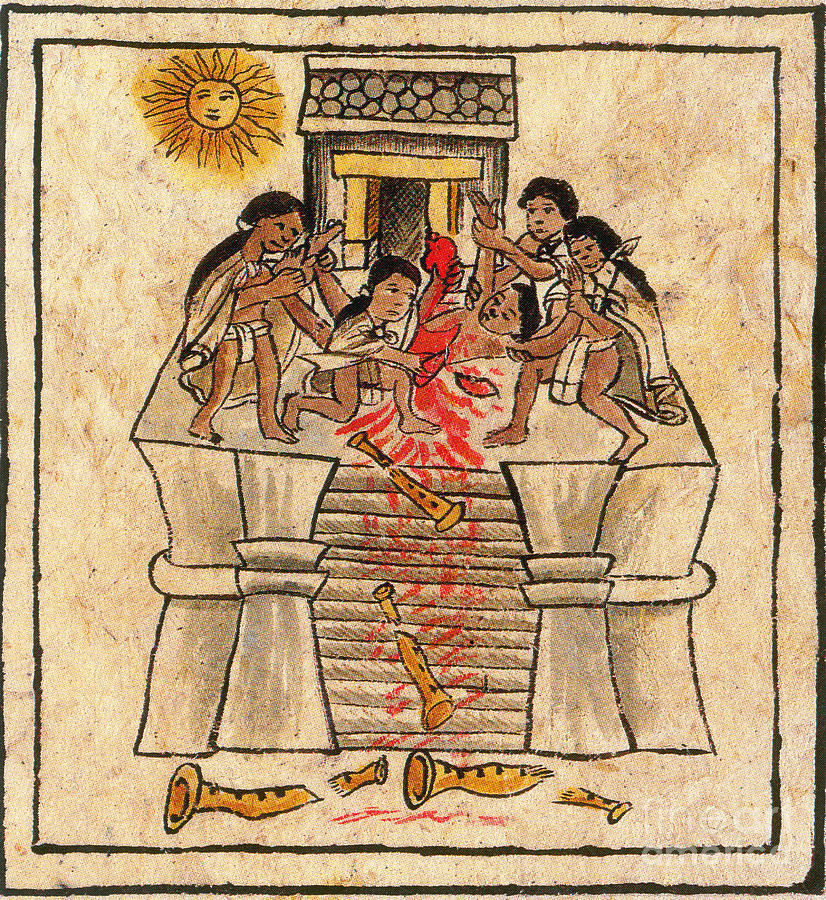Los Angeles and Austin, Texas have now joined the list of liberal-run cities that have eradicated Columbus Day from their calendars and replaced it with “Indigenous Peoples’ Day.” In LA, the desire to dis the European discoverer was so strong that they rejected a compromise proposal to keep Columbus Day and add “Indigenous Peoples’ Day” elsewhere.
“We need to dismantle a state-sponsored celebration of a genocide of indigenous peoples,” said Chrissie Castro of the LA Native American Indian Commission. “To make us celebrate on any other day would be a further injustice.”
Most Americans don’t agree. A new Marist poll finds 56 percent of Americans admire Columbus and support Columbus Day. They reject the idea that it’s a holiday about slaughter and enslavement. However, if we really want to commemorate horrifying, unspeakable violence and oppression in the Americas, I’ve got the perfect holiday: “Indigenous People’s Day.”
“Long before the white European knew a North American continent existed, Indians of the Northern Plains were massacring entire villages,” says George Franklin Feldman in the book “Cannibalism, Headhunting and Human Sacrifice in North America: A History Forgotten.” “And not just killed, but mutilated. Hands and feet were cut off, each body’s head was scalped, the remains were left scattered around the village, which was burned.”
Less Pocahontas and More Blood Sacrifice
When thinking of pre-Columbian America, forget what you’ve seen in the Disney movies. Think “slavery, cannibalism and mass human sacrifice.” From the Aztecs to the Iroquois, that was living among the indigenous peoples before Columbus arrived.
For all the talk from the angry and indigenous about European slavery, it turns out that pre-Columbian America was virtually one huge slave camp. According to “Slavery and Native Americans in British North America and the United States: 1600 to 1865,” by Tony Seybert, “Most Native American tribal groups practiced some form of slavery before the European introduction of African slavery into North America.”
“Enslaved warriors sometimes endured mutilation or torture that could end in death as part of a grief ritual for relatives slain in battle. Some Indians cut off one foot of their captives to keep them from running away.”
Things changed when the Europeans arrived, however: “Indians found that British settlers… eagerly purchased or captured Indians to use as forced labor. More and more, Indians began selling war captives to whites.”
That’s right: Pocahontas and her pals were slave traders. If you were an Indian lucky enough to be sold to a European slave master, that turned out to be a good thing, relatively speaking. At least you didn’t end up in a scene from “Indiana Jones And The Temple of Doom.”
Ritual human sacrifice was widespread in the Americas. The Incas, for example, practiced ritual human sacrifice to appease their gods, either executing captive warriors or “their own specially raised, perfectly formed children,” according to Kim MacQuarrie, author of “The Last Days of the Incas.”
The Aztecs, on the other hand, were more into the “volume, volume, VOLUME” approach to ritual human slaughter. At the re-consecration of the Great Pyramid of Tenochtitlan in 1487, the Aztecs performed a mass human sacrifice of an estimated 80,000 enslaved captives in four days.
Also Widespread Torture and Cannibalism
According to an eyewitness account of “indigenous peoples” at work—in this case, the Iroquois in 1642, as observed by the Rev. Father Barthelemy Vimont’s “The Jesuit Relations”—captives had their fingers cut off, were forced to set each other on fire, had their skinned stripped off and, in one captured warrior’s case, “the torture continued throughout the night, building to a fervor, finally ending at sunrise by cutting his scalp open, forcing sand into the wound, and dragging his mutilated body around the camp. When they had finished, the Iroquois carved up and ate parts of his body.”
Shocked? Don’t be. Cannibalism was also fairly common in the New World before (and after) Columbus arrived. According to numerous sources, the name “Mohawk” comes from the Algonquin for “flesh eaters.” Anthropologist Marvin Harris, the author of “Cannibals and Kings,” reports that the Aztecs viewed their prisoners as “marching meat.”
The native peoples also had an odd obsession with heads. Scalping was a common practice among many tribes, while some like the Jivaro in the Andes were feared for their head-hunting, shrinking their victims’ heads to the size of an orange. Even sports involved severed heads. If you were lucky enough to survive a game of the wildly popular Meso-American ball (losers were often dispatched to paradise), your trophy could include an actual human head.
There Are No Pure Peoples in History
Slavery, torture, and cannibalism—tell me why we’re celebrating “Indigenous People’s Day” again? And we’re getting rid of Columbus Day to protest—what? The fact that one group of slavery-practicing violent people conquered another group of violent, blood-thirsty slavers? That’s a precis of the history of the Americas before Columbus arrived.
This has always been the fatal flaw of the Left’s politics of race guilt: Name the race that’s not “guilty”? Racism, violence, and conquest are part of the human condition, not the European one.
There is, however, one key difference between the European Conquistadors and the Incas, Aztecs, and Iroquois who conquered the Americas before them: In addition to violence and greed, the Europeans also brought literacy, liberalism, and the scientific method, all of which would transform America into the greatest champion of human freedom the world has never known.
Do the anti-Columbus activists who claim Europe’s conquest of America is a sin really want to live in a world where it never happened? Where is America an illiterate, technological backwater of tribal violence and ritual human sacrifice? Of course not. The only reason their ideological idiocy has free rein today is that Europeans showed up in 1492.





